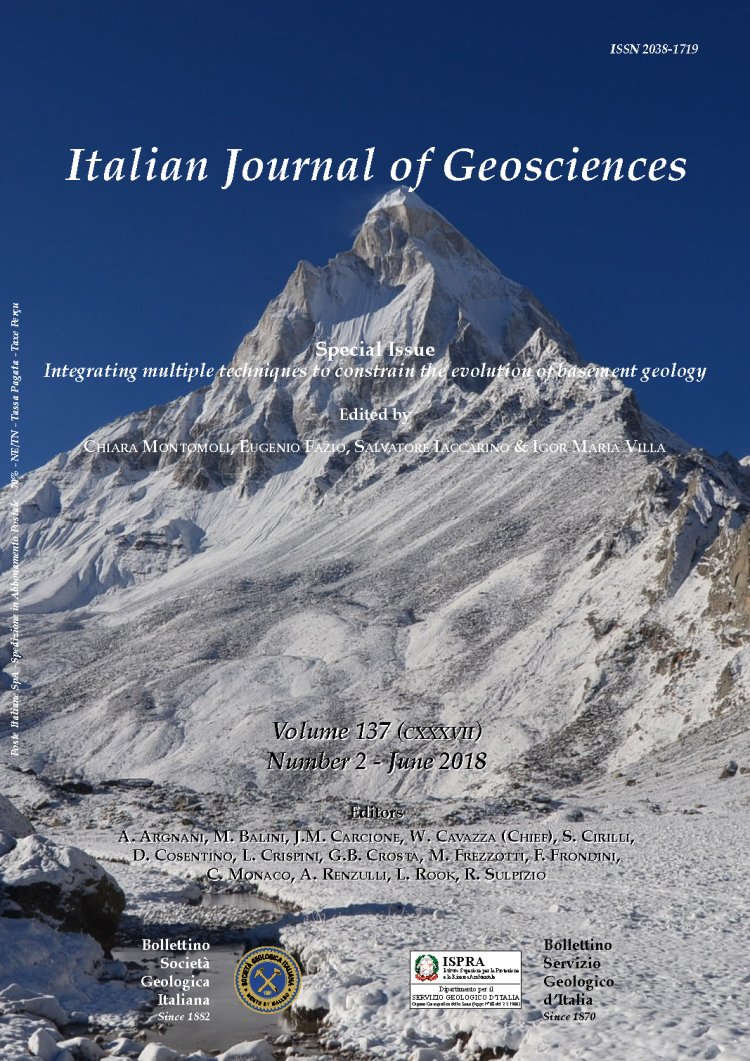
Structural setting, kinematics and metamorphism in a km-scale shear zone in the Inner Nappes of Sardinia (Italy)
Chiara Montomoli (1,2), Salvatore Iaccarino (3), Matteo Simonetti (3), Marco Lezzerini (1) & Rodolfo Carosi (3)
(1) Università di Pisa, Dipartimento di Scienze della Terra, via Santa Maria 53, 56126, Pisa, Italy.
(2) C.N.R. -Istituto di Geoscienze e Georisorse, via Moruzzi 1, 56124, Pisa, Italy.
(3) Università di Torino, Dipartimento di Scienze della Terra, via Valperga Caruso 35, 10125, Torino, Italy.
Corresponding author e-mail: chiara.montomoli@unipi.it.
Volume: 137 (2018) f.2
Pages: 294-310
Abstract
In continental collisional orogenic belts, the hinterland-foreland transition plays a crucial role in the deformation styles and in the exhumation modes of the middle crustal rocks. The Barbagia Thrust (BT), a regional scale shear zone in the Variscan belt of central Sardinia, represents this transition. The BT, separating nappes with
different deformation styles, is still poorly characterized.
We present new data of the BT and of the nearby tectonic units, using a multidisciplinary approach. We characterized in detail both meso- and micro-structural features, as well as, the metamorphic conditions with the aid of illite and chlorite “crystallinity” of rocks from the footwall, hanging wall and high-strain zone of the BT. Moreover, combining different palaeopiezometer-wet quartzite flow
law pairs we characterized the rheological parameters (i.e., flow stress and strain rate) present during the BT activity. Three main deformation phases were recognized. After a D1 contractional deformation, a D2 related to the BT movement was associated to the development of a nearly 100 m thick high-strain zone with
the development of a mylonitic foliation, Sm, at middle crustal conditions, near the "brittle-ductile” transition. Metamorphic constrains obtained from the footwall, the hanging wall and the high-strain zone supported an epizonal metamorphism with no unambiguous trend related to the strain intensity.
Integrating our new metamorphic, deformation and rheological data, with previous ones in the geological literature helps to better unravel the long-lasting history of the nappe emplacement at hinterland-foreland transition in the Sardinian Variscan Belt.
Keywords
Variscan Belt, illite crystallinity, chlorite crystallinity, ductile deformation, palaeopiezometry, shear zone.
Get Full Text